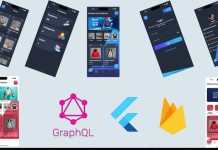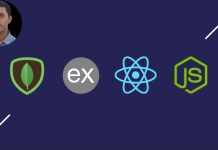Note:
If you guys are getting coupon expired or course is not free after opening the link, then it is due to the fact that course instructors provide only few hundreds or thousands of slots which get exhausted. So, try to enroll in the course as soon as it is posted in the channel. The Coupons may expire any time for instant notification follow telegram channel


Django Interview Questions And Answers Updated August 2023.
Are you preparing for a Django interview and looking for a resource to enhance your knowledge and ace your interview? Look no further! This Django Interview Questions and Answers MCQ course on Udemy provides an in-depth explanation of essential Django concepts along with real-world examples, making it suitable for both beginners and experienced developers.
With 450 Django interview questions covering a wide range of topics, this course is meticulously crafted to help you gain proficiency in Django development and succeed in your next interview. Each question is accompanied by a detailed answer, ensuring you understand the concepts thoroughly.
Topics Covered:
-
Django Intro: Get started with Django by understanding its core principles, its role in web development, and its advantages over other frameworks.
-
Django Get Started: Learn how to set up a virtual environment to isolate your Django projects, install Django using various methods, and ensure a smooth development environment.
-
Create Virtual Environment: Discover the importance of virtual environments and learn how to create and manage them to avoid dependency conflicts.
-
Install Django: Learn different ways to install Django, including using pip and virtual environment, and understand the best practices for Django installation.
-
Django Create Project: Dive into creating Django projects from scratch, including project structure, settings configuration, and management commands.
-
Django Create App: Learn how to create Django apps within projects and explore their purpose and organization.
-
Django Views: Understand the concept of views in Django and learn how to create, handle requests, and return responses using views.
-
Django URLs: Explore URL routing in Django and learn how to map URLs to views, handle dynamic URLs, and use regular expressions for URL patterns.
-
Django Templates: Delve into Django’s powerful templating engine and learn how to create dynamic and reusable templates using template tags, filters, and template inheritance.
-
Django Models: Master Django’s Object-Relational Mapping (ORM) and learn how to define models, create database tables, and perform database operations.
-
Django Insert Data: Gain expertise in inserting data into the database using Django’s ORM and understand various techniques to handle data input.
-
Django Update Data: Learn how to update and modify data in the database using Django’s ORM and explore different approaches to data manipulation.
-
Django Delete Data: Discover how to delete records from the database using Django’s ORM and learn about cascading deletes and transaction management.
-
Django Update Model: Explore techniques to update existing models in Django, including modifying fields, adding new fields, and handling model migrations.
-
Display Data: Learn how to fetch and display data from the database in your Django views and templates using querysets.
-
Prepare Template and View: Discover how to prepare data in the view and pass it to the template for rendering dynamic content.
-
Add Link to Details: Learn how to add links to details pages in Django, allowing users to navigate and access specific information.
-
Add Master Template: Understand the concept of a master template in Django and learn how to create a consistent layout across multiple pages.
-
Add Main Index Page: Learn how to create an index page as the main entry point of your Django application and customize its appearance.
-
Django 404 Template: Explore how to create a custom 404 error page in Django to provide a user-friendly experience when a page is not found.
-
Add Test View: Discover how to add test views in Django to ensure the correct functioning of your application and avoid potential bugs.
-
Admin Interface: Gain insights into Django’s built-in admin interface and learn how to register models, customize the admin site, and perform administrative tasks effortlessly.
-
Django Admin: Explore advanced features of the Django admin interface, including filtering, searching, and managing related objects.
-
Create User: Learn how to create and manage user accounts using Django’s authentication system, including registration, login, and password reset functionality.
-
Include Models: Understand how to include and configure models in the Django admin interface to provide a user-friendly interface for managing data.
-
Set List Display: Learn how to customize the list display of models in the Django admin, including fields, search fields, and filters.
-
Update Members: Discover techniques to update and modify member details through the Django admin interface, ensuring data consistency and accuracy.
-
Add Members: Learn how to add new members and manage their information efficiently using the Django admin interface.
-
Delete Members: Understand how to delete members and handle related data using the Django admin interface.
-
Django Syntax: Explore the syntax used in Django templates, including variables, tags, filters, conditionals, loops, and includes.
-
Django Variables: Learn how to work with variables in Django templates and manipulate their values for dynamic rendering.
-
Django Tags: Discover commonly used template tags in Django and how they help in performing complex operations and logic within templates.
-
Django If Else: Understand how to use conditional statements in Django templates to control the flow of rendering based on specific conditions.
-
Django For Loop: Learn how to iterate over collections and perform repetitive tasks using the powerful for loop in Django templates.
-
Django Comment: Explore the Django comment framework and learn how to implement comment functionality in your Django applications.
-
Django Include: Master the include directive in Django templates to reuse and modularize code for better maintainability and reusability.
-
QuerySets: Dive into QuerySets, Django’s powerful database querying API, and learn how to perform complex queries, filtering, ordering, and more.
-
QuerySet Introduction: Understand the basics of QuerySets and how they simplify database interactions in Django.
-
QuerySet Get: Learn how to retrieve a single record from the database using the get() method and handle exceptions when records are not found.
-
QuerySet Filter: Discover how to filter records in the database using the filter() method and apply multiple filters for precise data retrieval.
-
QuerySet Order By: Learn how to sort and order records in the database using the order_by() method and handle ascending and descending order.
-
Static Files: Understand how to manage static files in Django, including CSS, JavaScript, and images, for better user experience and efficient project organization.
-
Add Static Files: Learn how to add static files to your Django project and configure their handling for proper rendering.
-
Install WhiteNoise: Explore the WhiteNoise library and learn how to integrate it into your Django project for efficient serving of static files.
-
Collect Static Files: Discover how to collect and organize static files in a central location for production deployment using Django’s collectstatic command.
-
Add Global Static Files: Learn how to add global static files that are accessible across multiple apps and templates in your Django project.
-
Add Styles to the Project: Understand the process of adding styles and applying CSS to your Django project for enhanced visual appeal.
Course Format (MCQ):
This Django Interview Questions and Answers course adopts a highly effective learning format with a focus on Multiple Choice Questions (MCQs). MCQs are an excellent way to test and reinforce your understanding of Django concepts. By answering these thoughtfully curated questions, you’ll gain hands-on experience in tackling real-world scenarios encountered in Django interviews.
Who should take this course?
This course is designed for a wide range of individuals who want to excel in Django interviews. Whether you’re a fresh graduate, a job seeker, or an experienced developer looking to switch to Django, this course caters to your needs. Beginners will benefit from the detailed explanations accompanying each question, while experienced developers can enhance their knowledge and brush up on advanced concepts.
Why should you choose this course?
Choosing this Django Interview Questions and Answers course comes with numerous advantages. Here’s why it stands out:
-
In-Depth Explanation: Each question is accompanied by a detailed answer, providing you with an in-depth understanding of Django concepts and their practical applications.
-
Real-World Examples: The course includes real-world examples that illustrate how Django is used in professional development scenarios, making it easier for you to grasp and apply the concepts.
-
Regular Updates: We understand the dynamic nature of technology. Therefore, we regularly update the course material to ensure that it remains up-to-date with the latest Django trends, best practices, and interview requirements.
We Update Questions Regularly:
We take pride in delivering the most relevant and up-to-date content. To stay in line with the latest industry trends and interview expectations, we regularly update the course material. Rest assured that you will have access to the most recent and accurate Django interview questions and answers.
Examples questions you’ll encounter:
-
What is Django and how does it differ from other web frameworks?
-
Explain the concept of a virtual environment in Django.
-
How do you install Django on your system?
-
What is the purpose of the Django project? How do you create one?
-
Describe the process of creating a Django app and its structure.
-
What are views in Django? How do you create a view?
-
Explain the role of URLs in Django and how you define them.
-
What are Django templates? How do you pass data to a template?
-
What are Django models? How do you define a model in Django?
-
How do you insert data into a Django database using models?
-
What is the purpose of the Django admin interface? How do you register models in the admin?
-
How do you customize the Django admin to display specific fields in the list view?
-
Explain how to update and delete data using Django models.
-
What is the syntax for variable usage in Django templates?
-
How do you use conditionals (if-else) in Django templates?
-
What is a QuerySet in Django? How do you retrieve specific records from a QuerySet?
-
How do you perform filtering and ordering in Django QuerySets?
-
What are static files in Django? How do you add and manage them in your project?
-
How do you collect static files in Django for deployment?
-
Explain the process of adding styles to a Django project using CSS.
What is Django?
Django is a high-level Python web framework that simplifies the development of robust and scalable web applications. It follows the Model-View-Controller (MVC) architectural pattern and promotes rapid development by providing a wide range of pre-built components and tools.
Why should I choose Django for web development?
Django offers several advantages for web development, including its scalability, reusability, and robustness. It provides a well-defined structure, comprehensive documentation, and a vibrant community. Django’s built-in security features and extensive third-party library support make it a popular choice among developers.
What are the key features of Django?
Django boasts numerous features that contribute to its popularity among developers. Some key features include an object-relational mapper (ORM) for database interactions, a powerful templating engine, automatic admin interface generation, URL routing, form handling, and comprehensive testing support.
How do I install Django?
To install Django, you need to have Python installed on your system. You can then use pip, the Python package manager, to install Django by running the command: pip install Django. Detailed installation instructions can be found in the Django documentation.
What is a Django project?
A Django project is the top-level container that encompasses an entire web application. It consists of various configuration files, settings, and multiple Django apps. A project typically contains multiple apps that handle specific functionality within the application.
What are Django apps?
Django apps are self-contained modules that encapsulate specific functionality within a Django project. Each app focuses on a distinct aspect of the project, such as user authentication, blog management, or product catalog. Apps can be reused across projects and provide a modular approach to Django development.
How do I create a Django app?
To create a Django app, you can use the command-line interface (CLI) provided by Django. Navigate to the directory where you want to create the app and run the command: python manage py startapp app_name. Replace “app_name” with the desired name of your app.
What is the Django ORM?
The Django ORM (Object-Relational Mapper) is a powerful component that allows developers to interact with databases using Python code. It provides an abstraction layer that enables you to define database models as Python classes and perform database operations using simple Python methods.
How do I run database migrations in Django?
Django’s migration system helps manage changes to your database schema over time. To run database migrations, use the command: python manage py migrate. This command applies any pending migrations and synchronizes the database schema with your models.
Can Django be used for building APIs?
Absolutely! Django has excellent support for building web APIs. It provides a dedicated module called Django REST Framework (DRF) that simplifies API development, including serialization, authentication, authorization, and URL routing.
These are just a few of the common questions and answers about Django. By diving deeper into the Django Interview Questions and Answers course, you will find more in-depth explanations, practical examples, and expert guidance to enhance your understanding and become a proficient Django developer.
Enroll in this Django Interview Questions and Answers course today and take your Django development skills to new heights.
Get ready to impress interviewers and land your dream job in web development!

![450 Django Interview Questions & Answers [August 2023]_650f9507ea3cc.jpeg](https://oyoads.in/wp-content/uploads/450-django-interview-questions-answers-august-2023_650f95077a305-696x392.jpeg)








![Passive Income: Create & Sell Online Courses [Full Course]](https://oyoads.in/wp-content/uploads/passive-income-create-sell-online-courses-full-course_661cb1a9a14ff-218x150.jpeg)
![AI for Business Strategy & Planning [Masterclass]](https://oyoads.in/wp-content/uploads/ai-for-business-strategy-planning-masterclass_661cb19898162-218x150.jpeg)








![Mastering Figma: Beginner to Expert [2020]](https://oyoads.in/wp-content/uploads/photo6329836549767801447-218x150.jpg)



![[100% Free]Python Bootcamp 2020 Build 15 working Applications and Games (31.5 Hours)](https://oyoads.in/wp-content/uploads/2020/05/Python-Bootcamp-2020-Build-15-working-Applications-and-Games-1-100x70.jpg)

![[100% Free]Java Programming: Complete Beginner to Advanced](https://oyoads.in/wp-content/uploads/2020/05/IMG_20200519_054150_522-100x70.jpg)
![[Tips & Technics] : How to Become a Great Leader Skills 2022](https://oyoads.in/wp-content/uploads/tips-technics-how-to-become-a-great-leader-skills-2022_6366a9e6b2043-324x160.jpeg)